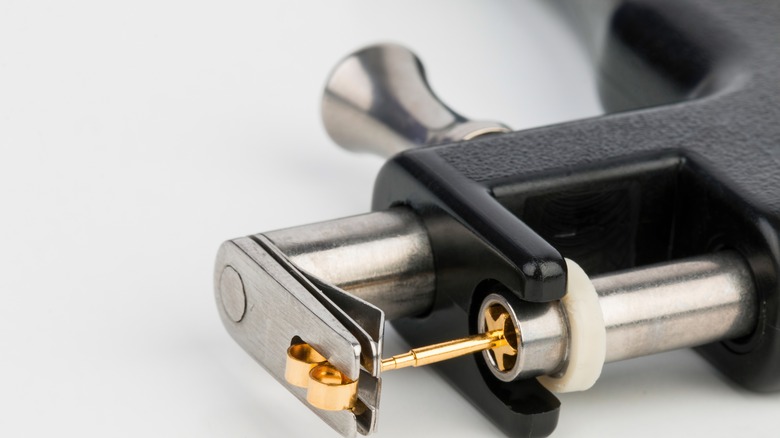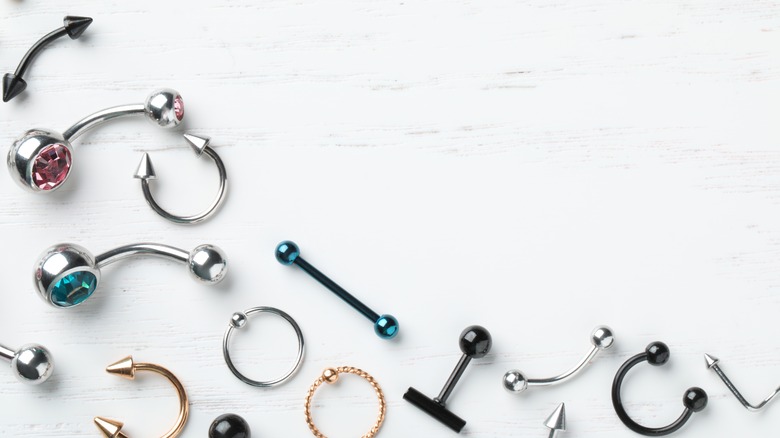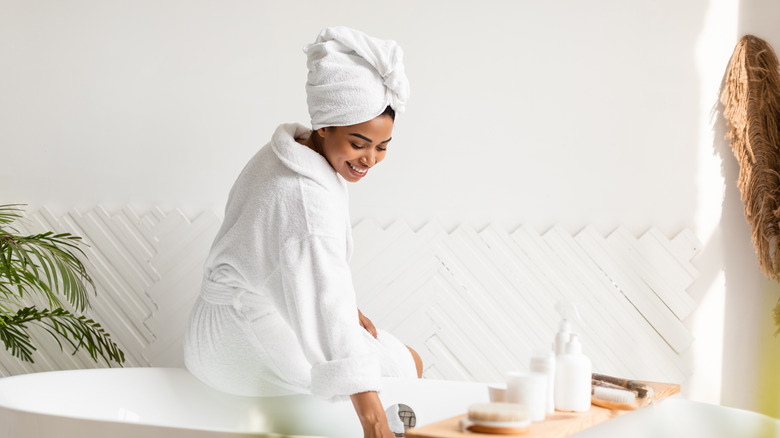Do Nipple Piercings Hurt?
You can get a piercing almost anywhere on your body. So, why not pierce your nipples? You can keep them as your little secret or have them peek-a-book from under your shirt. According to Cosmopolitan, this body modification isn't just for a good look; it has sexual benefits too. Piercing your nipples increases their sensitivity, and that means an increase in pleasure. You don't have to stop at one, either. It's possible to have multiple piercings through one nipple. Although one horizontal piercing is the most popular, your nipple can be pierced at any angle.
Some of our favorite celebs are a part of the pierced nipple club. According to Glamour, you'll join the ranks with Rihana, Kylie, and Kendall Jenner. Now that you're totally on board, you're thinking about the pain and aftercare. It's good to be cautious, especially with body modifications. Luckily, we are here to answer those questions and put you in the know before getting your nipple piercing. So after this article, you can book your appointment with confidence.
Pain and safety
Piercings come with pain. Your nipples will be sore afterward, according to WebMD. You can experience bleeding, discharge, swelling, and itchiness. You'll have to leave your nipples alone while they heal, which can take six months. If you plan on breastfeeding, it might be best to postpone this piercing. Breastfeeding with a nipple piercing can be tricky, and your milk ducts can be blocked by scar tissue and nipple jewelry.
Nipple piercings come with the potential of tearing, scarring, nerve damage, and abscess, according to Verywell Health. Nerve damage is rare but still possible. When nerves are damaged in the nipple, breastfeeding becomes more difficult. According to WebMD, it can complicate how the milk flows. Abscesses are common. They are pus-filled bumps under the skin, and they can cause bleeding and need to be medically drained. Because the nipple is sensitive skin, it requires extra precautions to avoid these complications. Learn how to take care of your nipple piercing.
Aftercare
Proper aftercare can ease your mind from the worries of infection and what your nipple piercing says about you. According to Healthline, you will need to rinse your piercing daily. With clean hands, rinse your nipple using warm water and unscented soap. You can also soak your nipples in salt water. As your piercing heals, be extra cautious with everyday tasks, like getting dressed, to avoid bumping your nipple. It is best to wear bras and tops with extra padding to provide your piercing with a shield.
FreshTrends recommends staying away from any aftercare products with additives or oils, as they can cause bumps to form. The classic salt water will do the trick. Blood and clear, creamy discharge are normal. However, if excretions turn bright white, yellow, or green, that can signify infection. To treat an infection, Medical News Today suggests, along with salt-water soaks, adding hot and cold compressions. It is important to keep the nipple jewelry in, as it drains bacteria. With proper aftercare, infections can be avoided.


